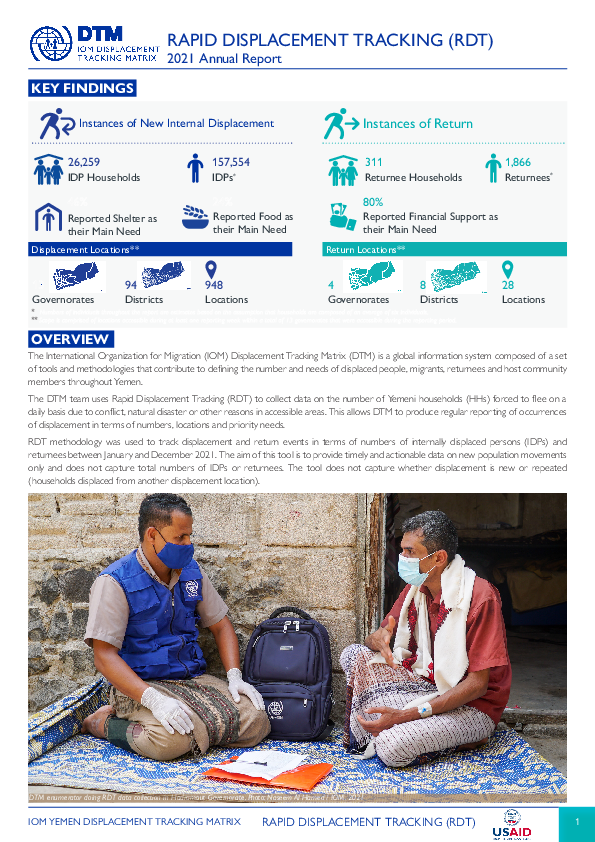-
Countries
-
Data and Analysis
-
Special Focus
-
Crisis Responses
Yemen — Annual Rapid Displacement Tracking Report (2021)

Contact
DTM Yemen, iomyemendtm@iom.int
Language
English
Location
Yemen
Period Covered
Jan 01 2021
Dec 31 2021
Activity
- Rapid Emergency Registration
- Mobility Tracking
DTM recorded 26,259 household displacements (representing 157,554 individuals) who fled, mainly due to conflict (25,258 HHs), across 13 governorates, 94 districts and 948 locations in Yemen during 2021.
This data only represents displacement events in 2021 and does not include people that were displaced in previous years and are still displaced to date. It should also be noted that the total number of identified household displacements (26,259 HHs) in 2021 cannot be added to the total stock of IDPs of 2020 since it contains an unknown number of duplicates (multiple displacements of the same HH) and returns (e.g., HHs recorded as displaced in January 2021 might have returned the following month).
Similarly, in 2020 DTM identified 28,734 households (172,404 individuals) who were displaced across 13 governorates, 118 districts and 1,249 locations. The slight drop in IDP numbers in 2021 compared to 2020 is most likely due to intensified barriers to movement brought on by the shifting frontlines, worsening security situation and increased access constraints. The nine per cent per cent decrease in observed household displacement instances should not be interpreted as indicative of an improved security situation. On the contrary, in 2021, 91 per cent of IDPs cited conflict as the main reason for displacement, compared to 83 per cent in 2020. Persons displaced during 2020 were also fleeing due to natural disasters, including torrential rains and flooding, which accounted for 12 per cent of displacements.
The first COVID-19 case in Yemen was reported in April 2020, followed by precautionary movement restrictions, which directly limited IDPs’ access to humanitarian assistance. COVID-19 related movement restrictions prevented data collection in some areas and may have contributed to the decreased levels of displacement observed in 2020 and 2021.
Nevertheless, it remains clear that causes unrelated to the pandemic – including conflict, disaster and the challenging socio-economic and political situation – continued to contribute to displacement through 2020 and 2021.
